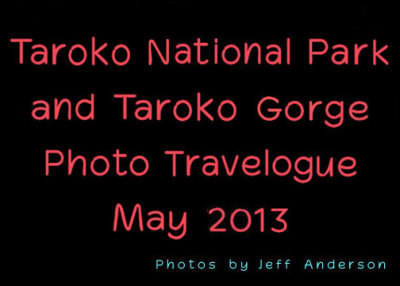
Taroko National Park and Taroko Gorge cover page. |
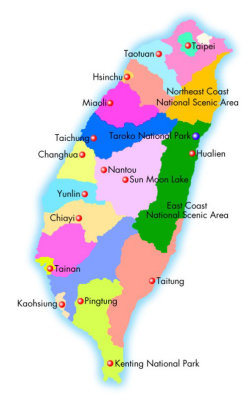
Map of Taiwan with the blue dot indicating Taroko National Park. |

To get to Taroko National Park, we had to fly to Hualien from Tapei. Passengers boarding our TransAsia Airways flight. |
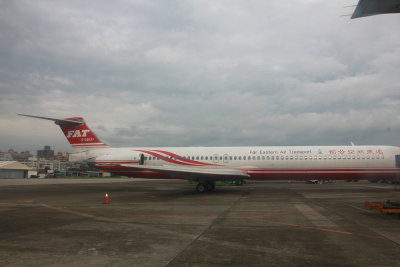
I was amused by this Far Eastern Air Transport (FAT) plane. |
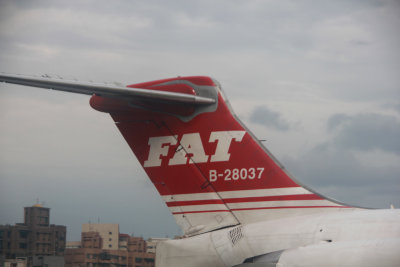
Close-up of the FAT logo on the tail of the plane. |
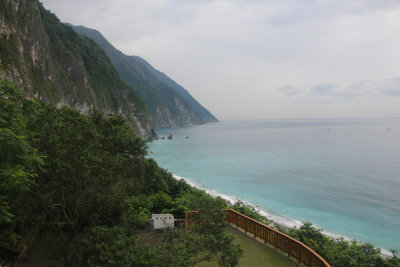
The Cinqshui Cliffs facing the Pacific Ocean is known as Taiwan's 8th Wonder of the World. |
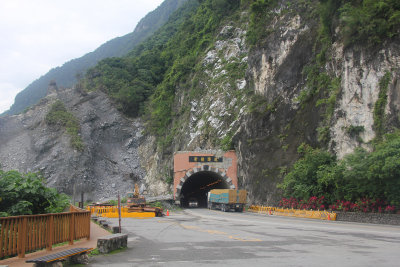
We passed through this tunnel on the Su-Hua Highway to get to the Cinqshui Cliffs. |
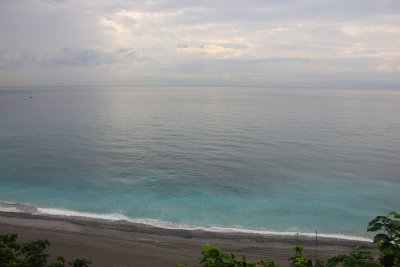
View of the Pacific Ocean, below. |

The cliffs span 21 kilometers (13 miles) and are an average of 800 meters (2,625 feet) above sea level. |
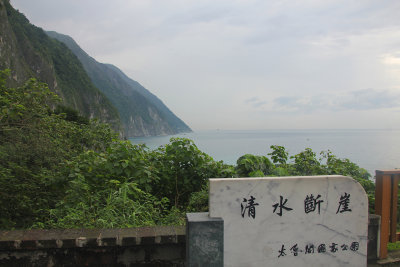
The cliffs were formed over millions of years by the pressure of layers of rock compressing limestone into marble. |
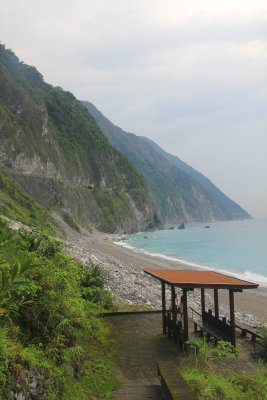
Small roofed structure on the beach below. |
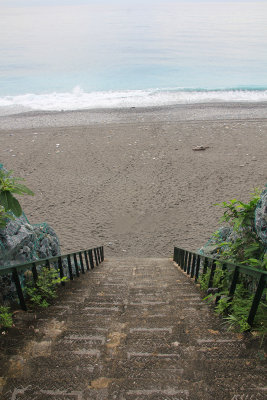
Steps leading down to the beach. |
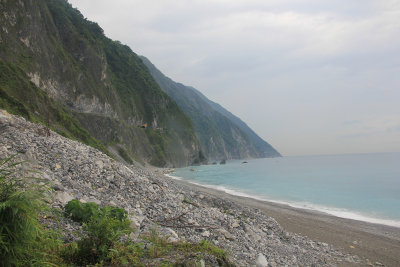
Many rocks fall from the cliffs onto the beach. |
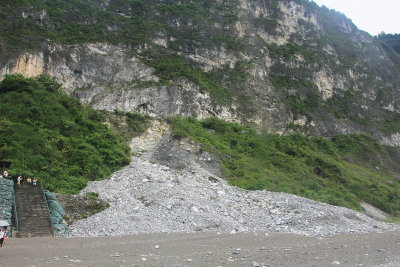
More fallen rocks on the beach. |
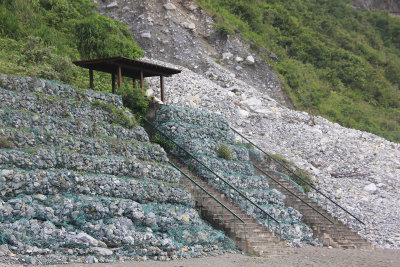
Some of the rocks below are wrapped in chicken wire to keep them off of the beach. |
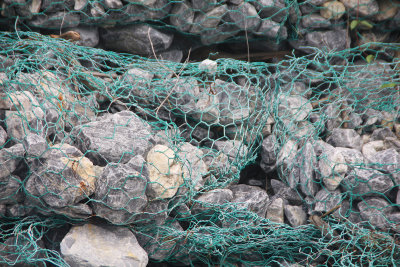
Close-up of the wrapped rocks. |
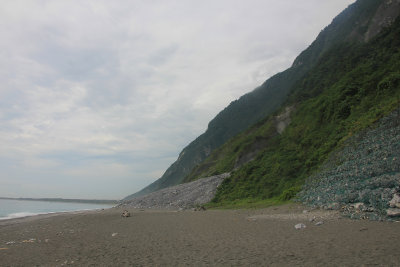
View of the beach beneath the Cinqshui Cliffs. |
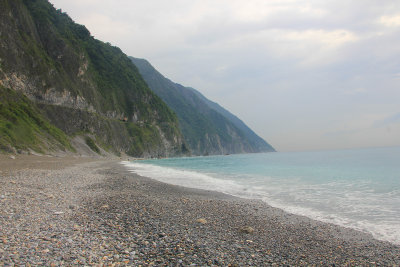
While there was sand, it was quite rocky. |
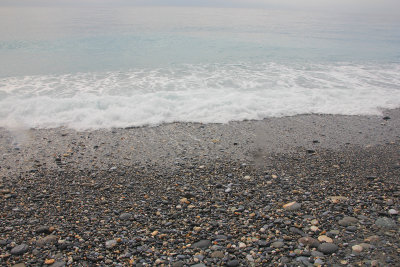
Rocks on the beach with a wave washing in. |
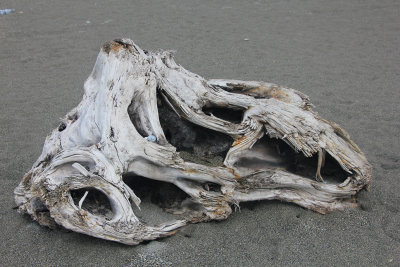
An interesting piece of driftwood that was on the beach. |
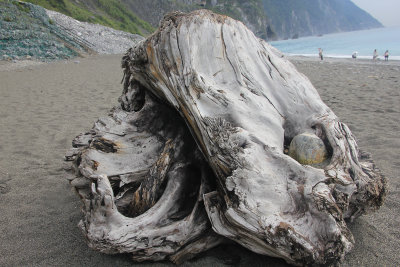
Another view of the driftwood. |
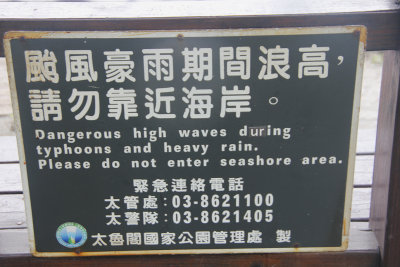
This sign by the beach would also apply to tsunamis! |
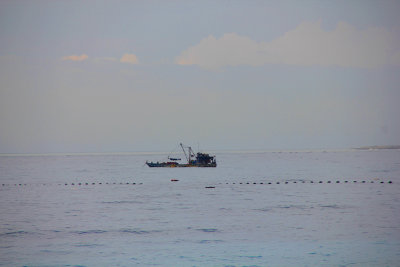
A fishing boat that was offshore. |
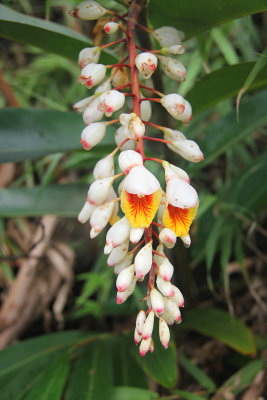
While climbing back up the trail from the beach, I admired this plant, which my guide described as a Moon Peach plant. |
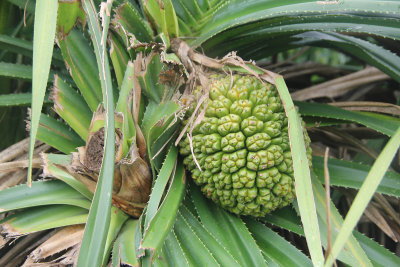
My guide said that this plant is called a Lin Tou. It is a non-edible fruit. |
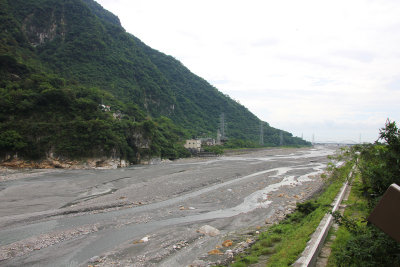
Lakebed in Taroko National Park. |
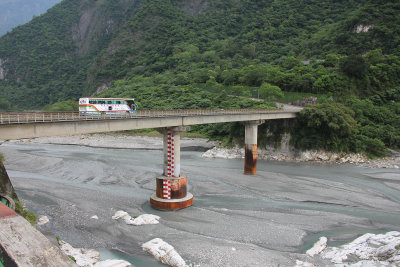
Bridge crossing the lakebed. |
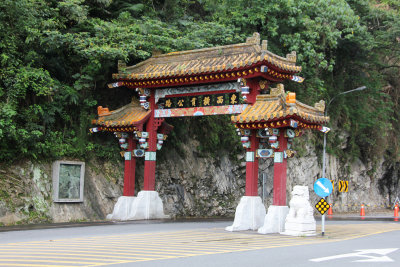
The Taroko Gateway, which is the entrance to the East-West Cross Island Highway. |
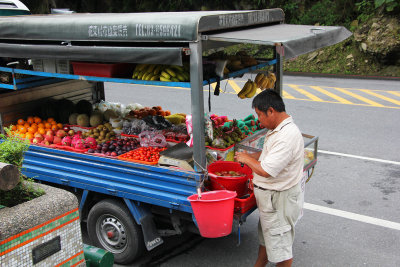
A fruit vendor with his truck were, nearby. |

The fruit vendor's helper was sitting in the front seat of his truck. |
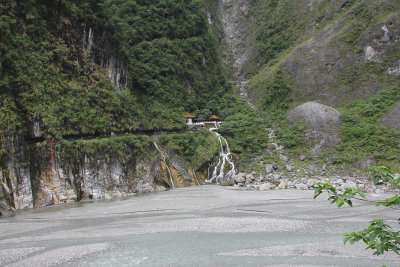
As we drove along the East-West Cross Island Highway, our first stop was at the Eternal Spring Shrine. |
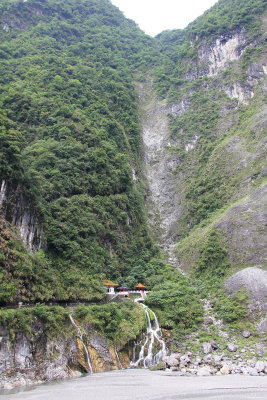
The Eternal Spring Shrine is deep within Taroko Gorge. |
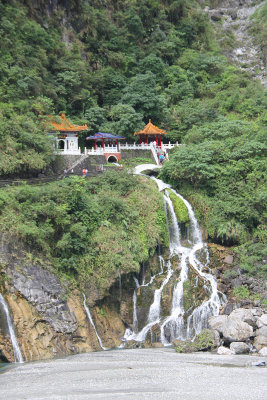
Close-up of the shrine. It commemorates the 212 veterans who died while constructing the highway (1956-1960). |
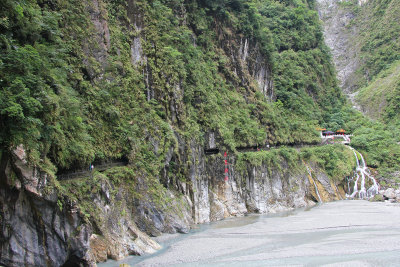
To get to the shrine, you have to walk on a path along the cliff near the base of the gorge. |
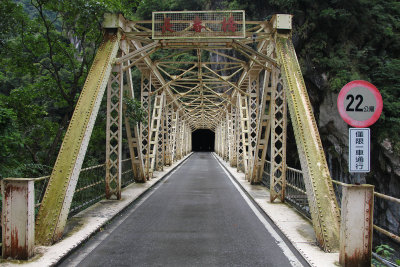
East-West Cross Island Highway Changchun Bridge that I walked over to get to the Eternal Spring Shrine. |
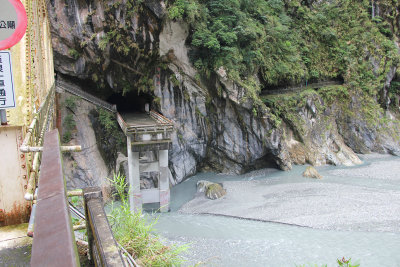
View from the bridge. On the platform ahead were some Buddhist statues. |
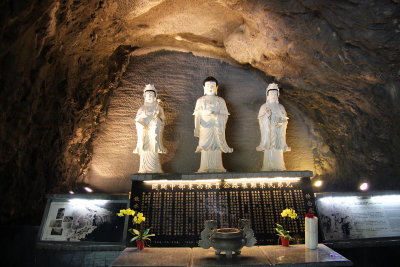
Three Buddhist statues on the way to the shrine. |
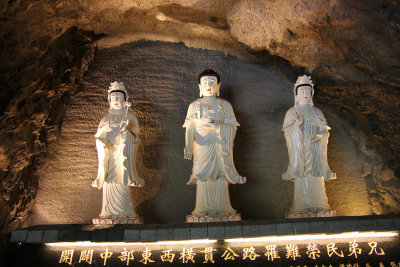
Close-up of the statues. |
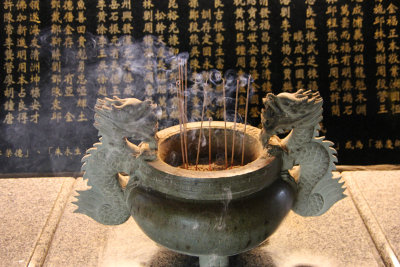
Dragon incense burner below the statues. |
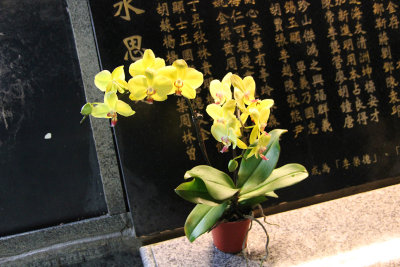
Next to the incense burner were some orchids. |
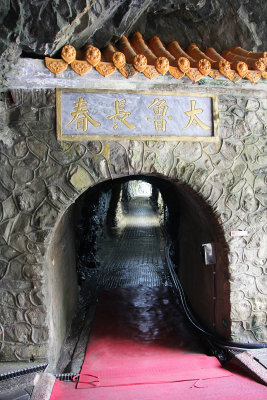
From the statues, I went through this tunnel to get to the Eternal Spring Shrine. |
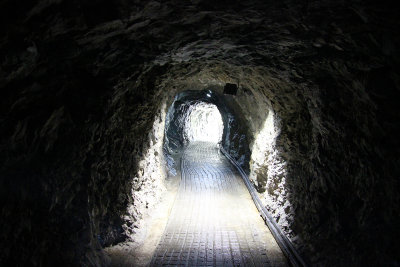
Interior of the tunnel. |
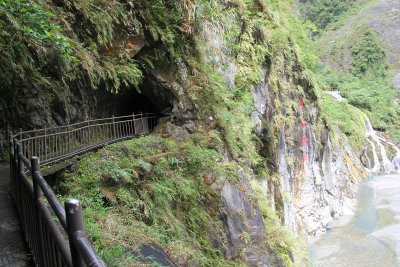
After exiting the tunnel, I proceeded on the the path along the cliff. |
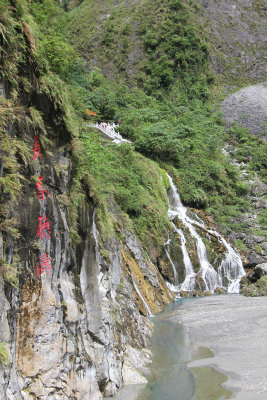
View of the flowing water ahead of me. |
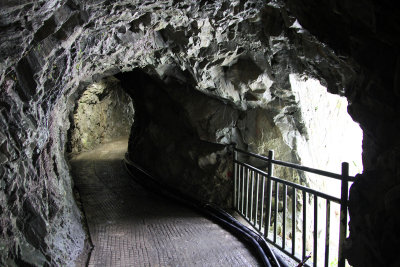
I got to another tunnel through the rocks. |
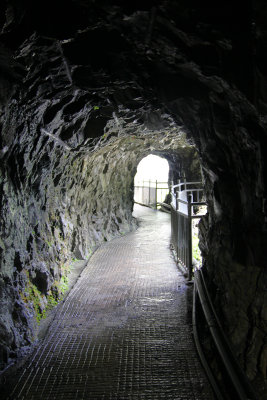
Interior of this section of tunnel. |
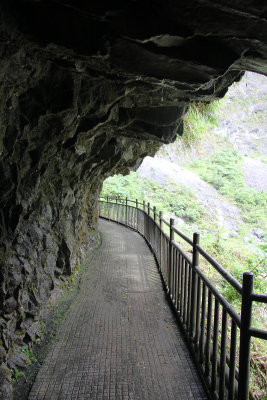
Here, you can see the precipitous cliff and how the path was carved into it. |
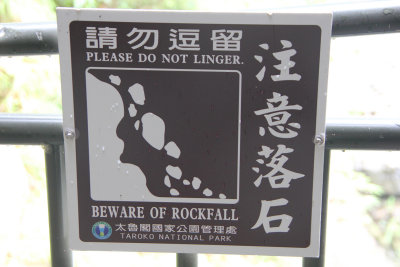
Sign along the path. |
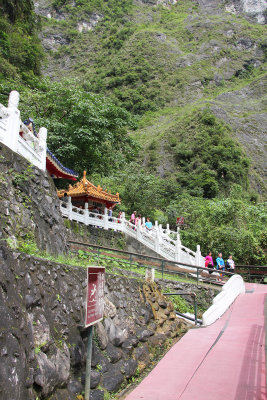
I finally got to the Eternal Spring Shrine. |
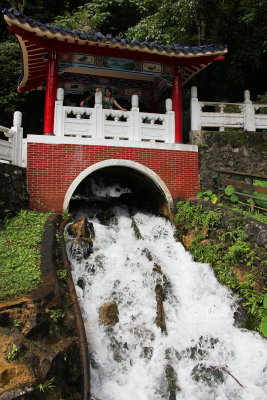
Water flowing through the shrine (which is the reason for its name). |
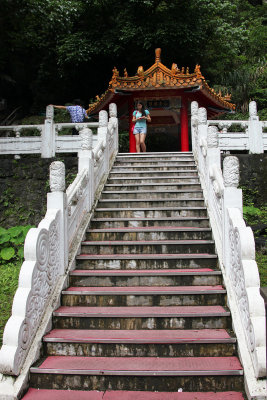
Steps leading up to the shrine. |
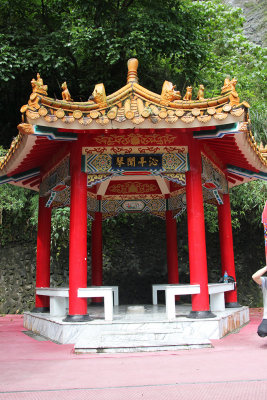
Small roofed structure at the shrine. |
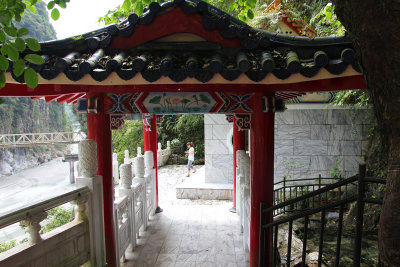
View as I walked through the shrine. |
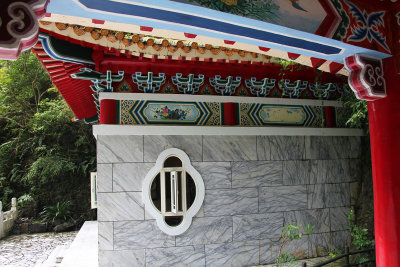
The main building was in front of me. |
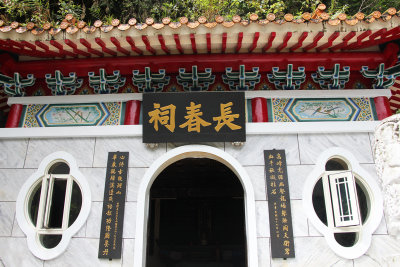
Entrance to the main building. |
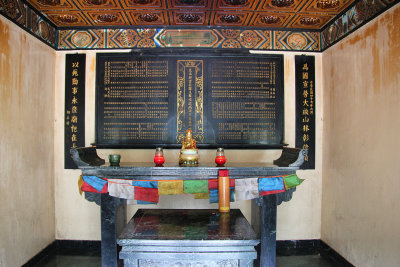
Small alter with Buddhist statue and candles. |
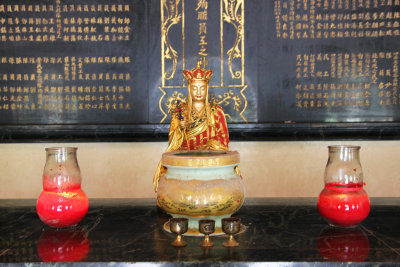
The alter was beautiful in its simplicity. |
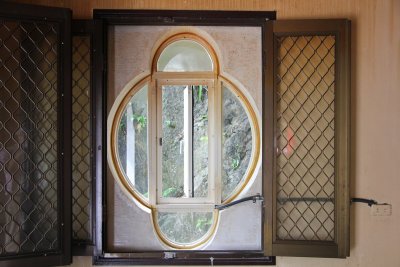
Interestingly-shaped window in the shrine. |
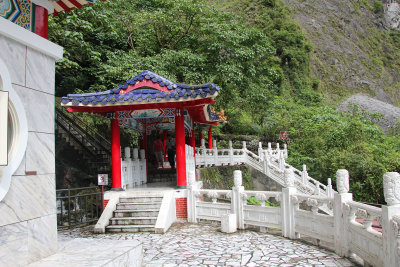
Another view of the Eternal Spring Shrine. |
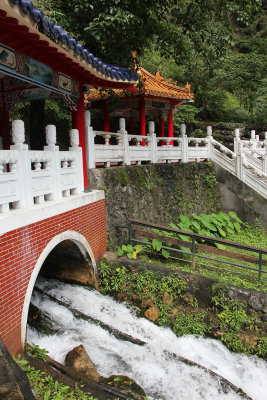
The gushing water as seen from the shrine. |
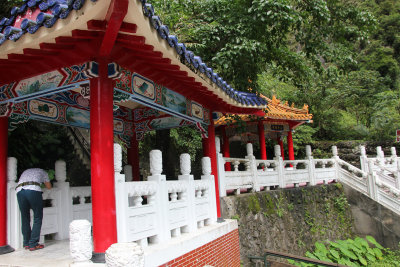
I admired the detailed carvings on the white railings. |
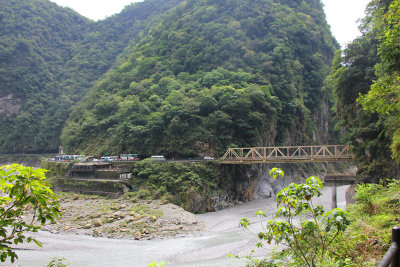
You can see where I walked (from all the buses) to get to the shrine. |
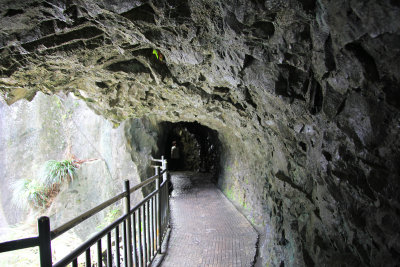
I walked back on the same path along the cliff after leaving the shrine. |
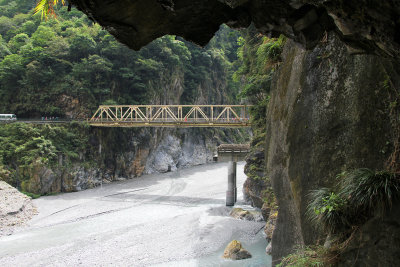
Great view ahead of the Changchun Bridge and of the gorge. |
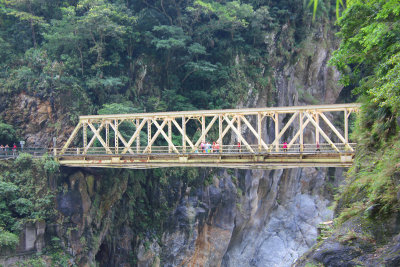
Close-up of the bridge, which was part of the amazing feat of the East-West Cross Island Highway. |

Looking up at the Changchun Bridge from the path below. |
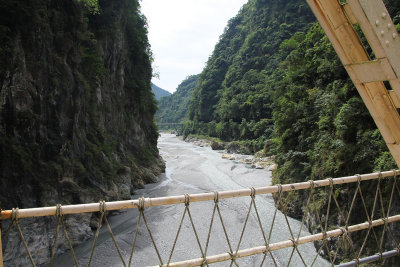
View of Taroko Gorge from the bridge. |
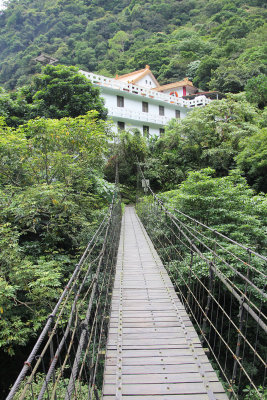
Next, I went on a trail with a narrow suspension footbridge that traverses over the Liwu River Gorge in Taroko National Park. |
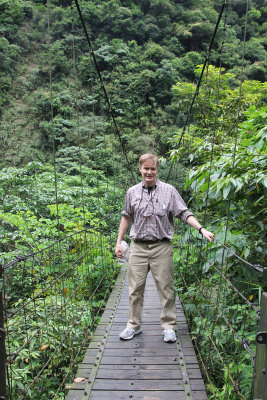
Me crossing the footbridge. It is not for the faint of heart! |
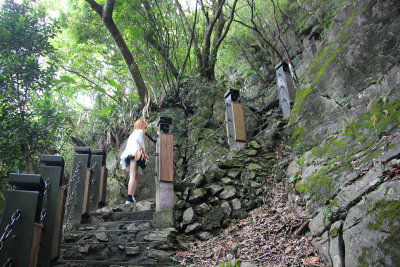
Steep trail that leads up to the Bell Tower that overlooks Liwu River Gorge. |
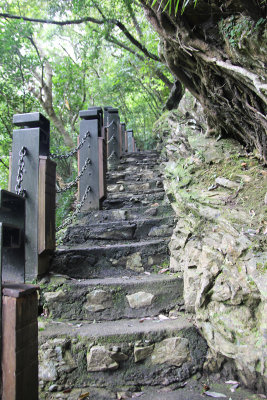
The trail is called the "Eternal Spring Shrine Trail," since it goes from the shrine to the Bell Tower and the Changuana Temple. |
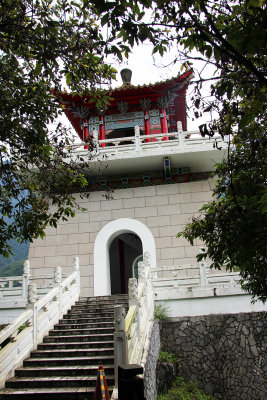
Finally, after a steep climb, I arrived at the Bell Tower. |
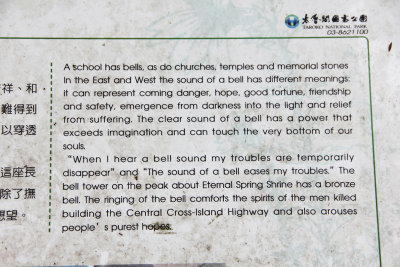
Sign in front of the Bell Tower describing the significance of bells. |
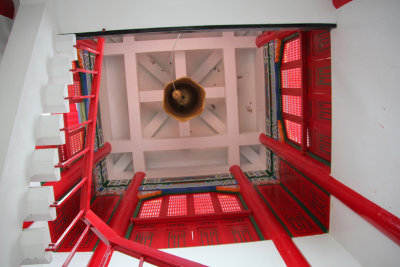
View looking from inside of the tower up at the bell. |
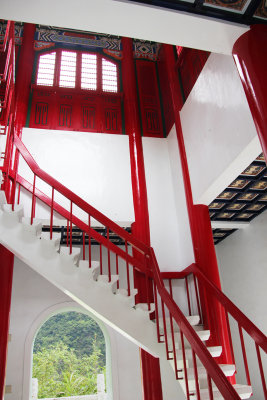
Stairs that lead up to the bell. |
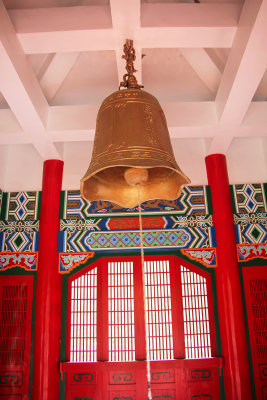
View of the bell from the top of the Bell Tower. |
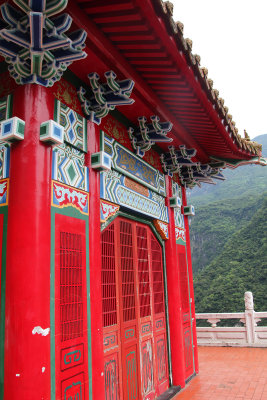
Traditional Chinese architectural style of the tower. |
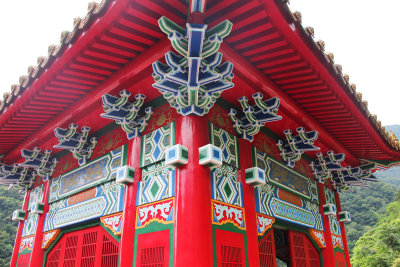
View of the elaborate decorations and designs on a corner of the tower. |
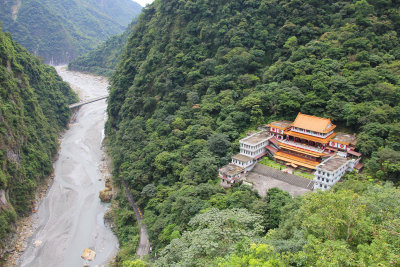
View from the Bell Tower of the Liwu River Gorge and Changuana Temple. |
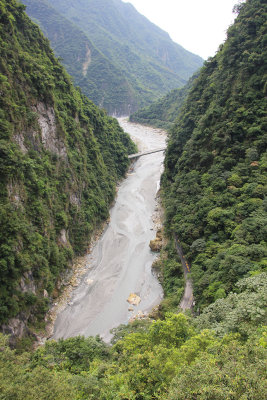
Close-up of the Liwu River Gorge. |
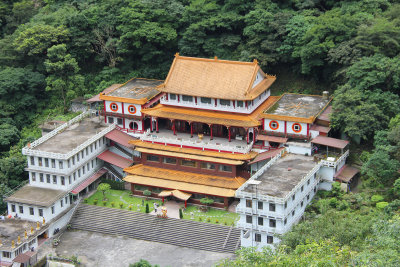
Close-up of Changuana Temple. |
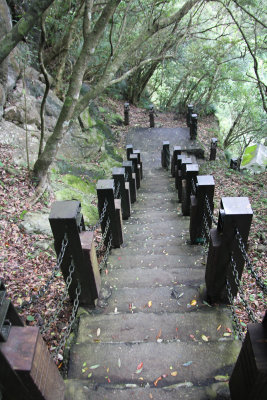
View of the trail as I headed down from the Bell Tower. |
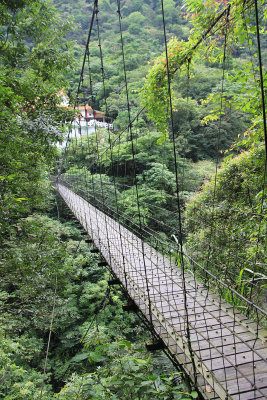
Again, I crossed the suspension footbridge on my way back. |
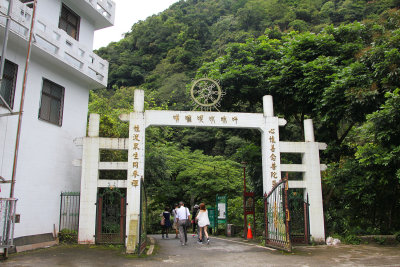
My next stop was to the Changuana (Buddhist) Temple. Entrance gate of the temple. |
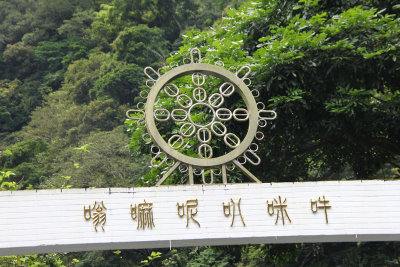
Interesting design on top of the gate. |
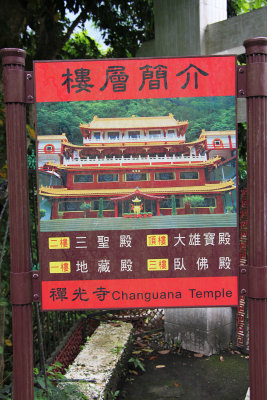
Sign at the entrance of the Changuana Temple in Taroko National Park. |
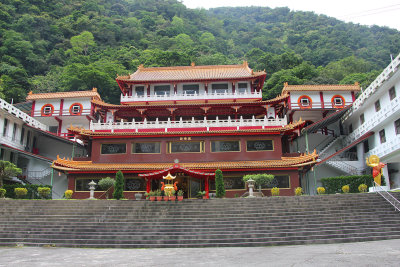
Front façade of the temple, which is an old, secluded Buddhist monastery.. |
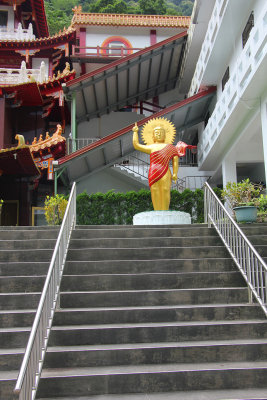
Buddhist statue at the top of the temple steps. |
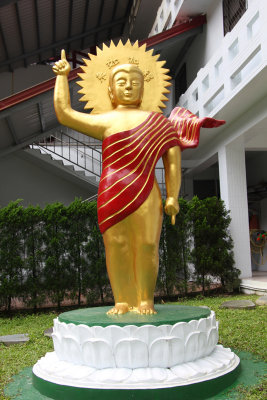
Close-up of the statue. |
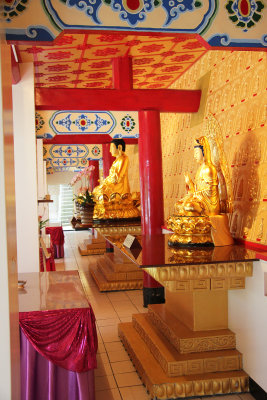
Interior, first floor view of Changuana Temple. |
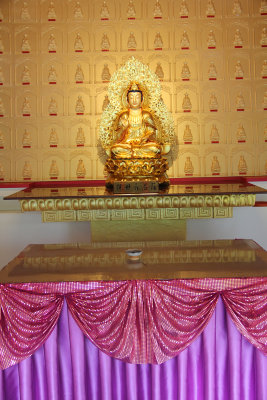
One of the many beautiful golden Buddhist figures in the temple. |
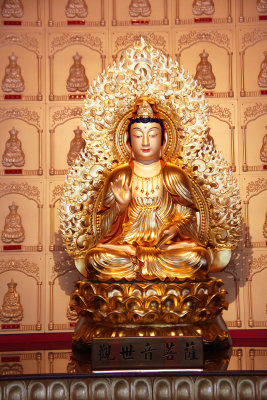
Close-up of the figure. |
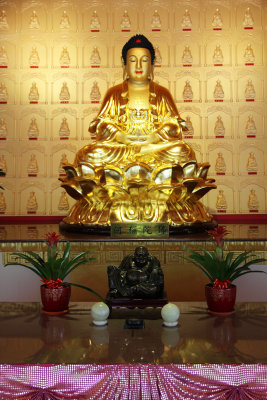
Another exquisite Buddhist statue. |
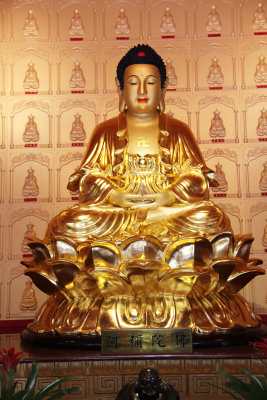
Close-up of the statue. |
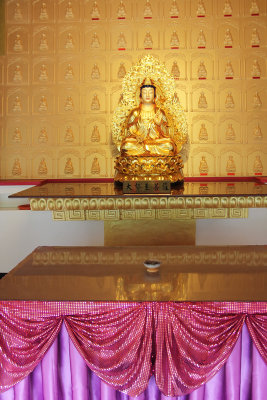
A third golden figure on the first floor of the temple. |
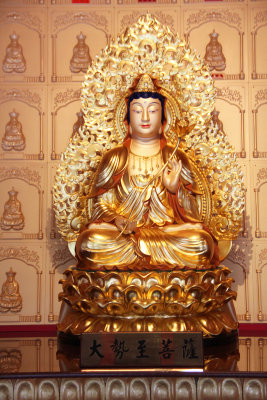
Close-up of the figure. |
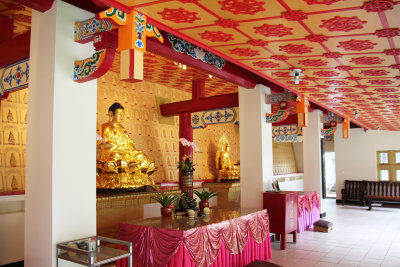
The interior architecture of the temple was equally beautiful. |
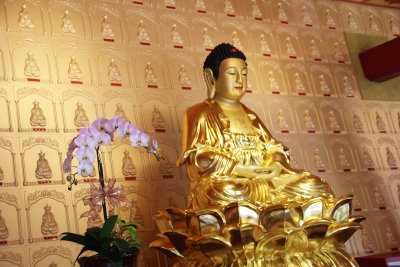
Another Buddhist statue on the second floor of Changuana Temple. |
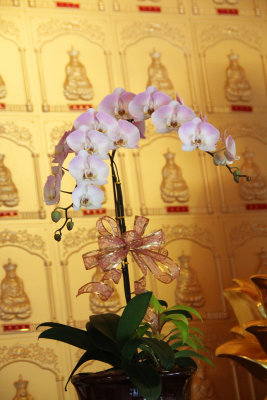
View of the orchid next to the statue. |
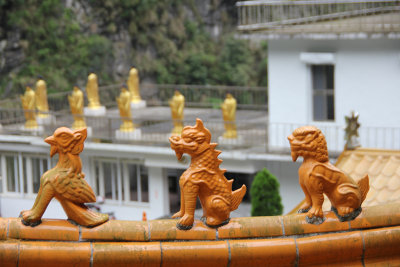
Bird, dragon and lion decoration in the temple. |
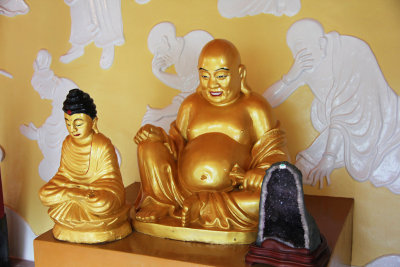
A "Happy Buddha" in the Changuana Temple. |
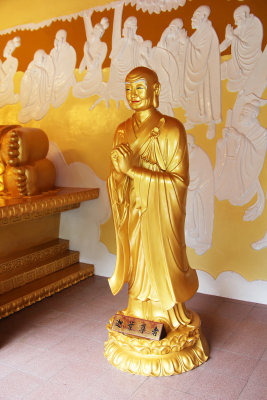
Another beautiful golden statue in the temple. |
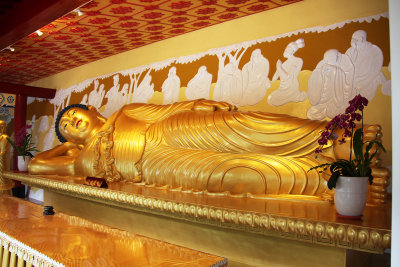
A magnificent "Reclining Buddha" figure in the Changuana Temple. |
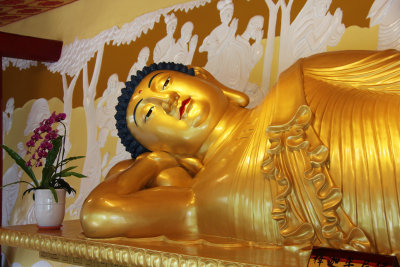
View of the upper body. |
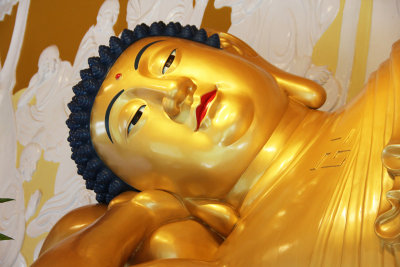
Close-up of the head. Note the long earlobes. |
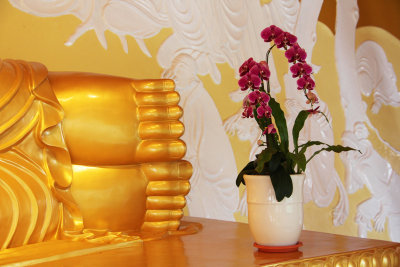
View of Buddha's feet. |
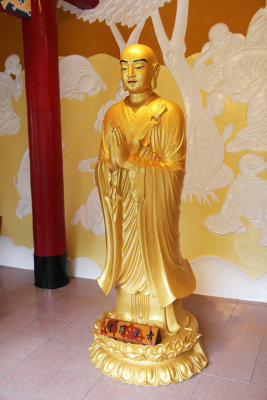
Another Buddhist statue looking devout with clasped hands. |
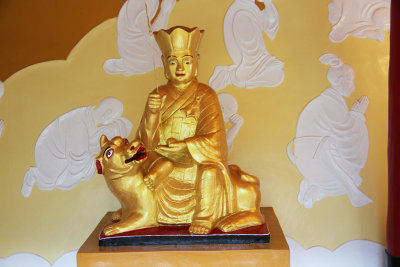
A golden figure with a dog. |
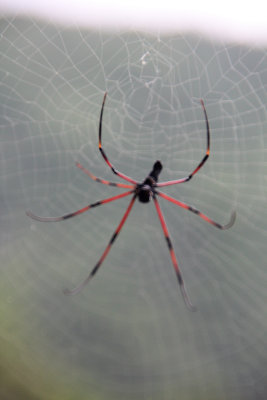
As I left the temple, I saw a spider and spider web. The guide called it a "human face spider," which is indigenous to the area. |
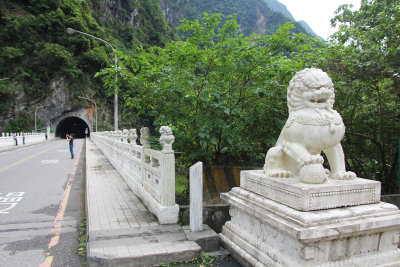
We drove through Jiuqudong Tunnel (Nine Turns Tunnel), the most spectacular part of Taroko Gorge, to get to Tzumu Bridge. |
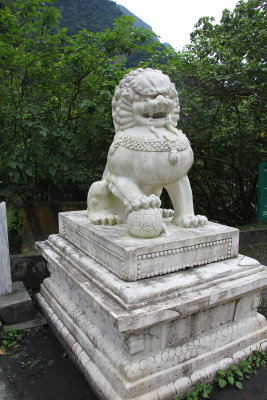
Lion statue at the end of the Tzumu Bridge. |
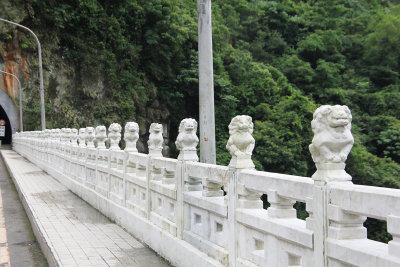
There are other smaller lion statues along the railing of the bridge. |
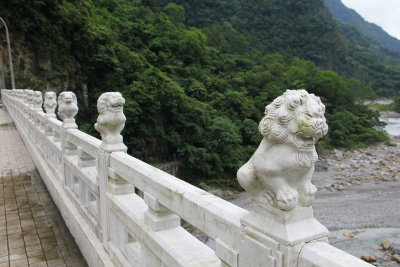
Each of the lions are different. |
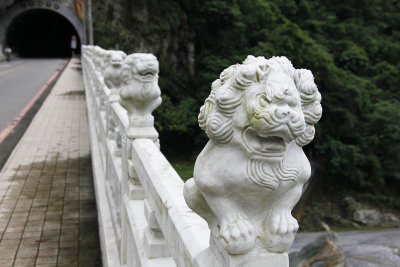
All of the lions have a lot personality. |
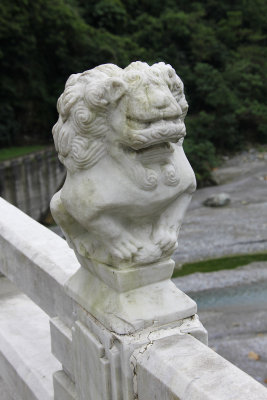
Close-up of one of the lion statues. |
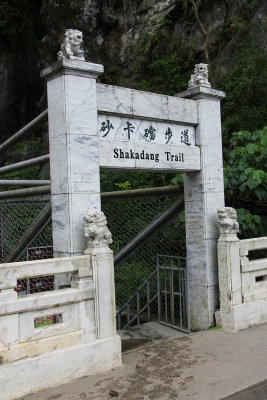
Entrance to the Shakadang Trail from the Tzumu Bridge. The trail follows the Shakadang River in Taroko Gorge. |
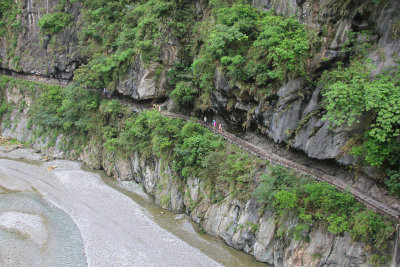
The Shakadang Trail as seen from the Tzumu Bridge. |
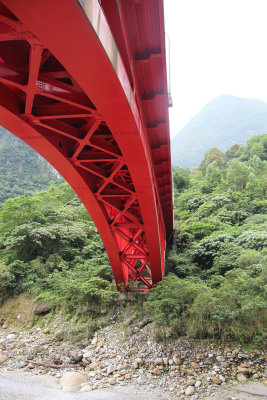
View of the Tzumu Bridge from the Shakadang Trail. |
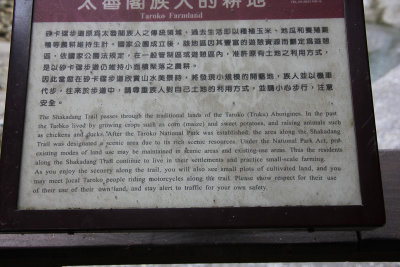
Sign describing how the Shakadang Trail passes through traditional lands of Taroko (Truko) Aborigines. |
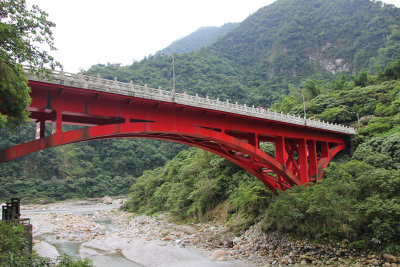
Another view of the Tzumu Bridge from the Shakadang Trail. |
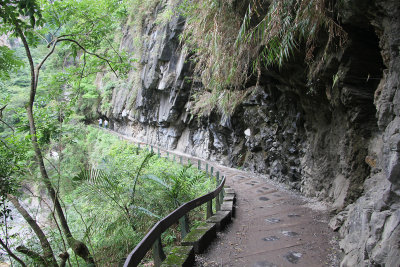
Section of the Shakadang Trail. |
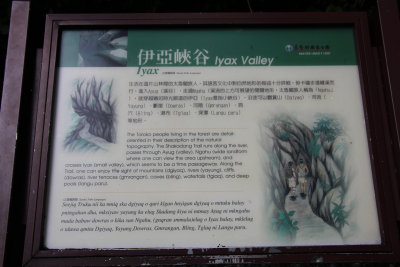
Sign describing how the Taroko Aborigines are detail oriented and describing the topography of the trail. |
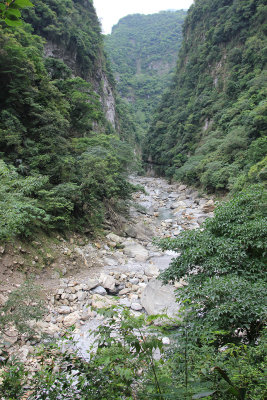
View of the Shakadang River passing through the gorge along the trail. |
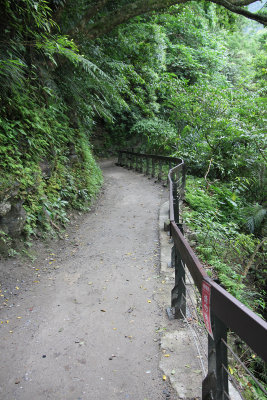
There was a lot of lush foliage along the Shakadang Trail. |
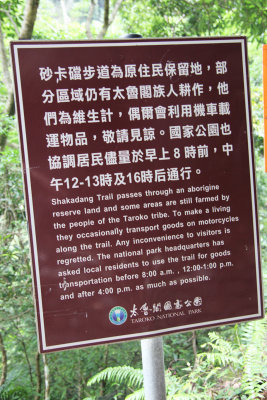
Another sign on the trail describing the area as a reserve land for the Taroko tribe of Aborigines. |
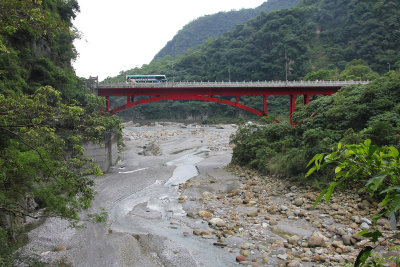
I was hiking further away from the Tzumu Bridge. |
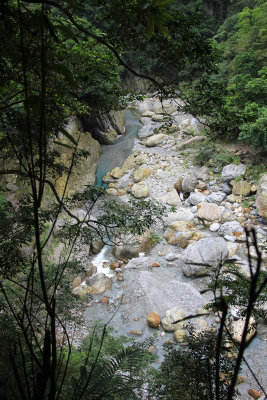
Another section of the river along the trail. |
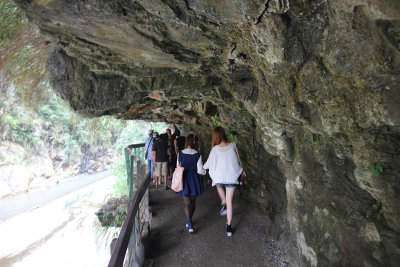
Other hikers along the Shakadang Trail. In some places, it was necessary to duck. |
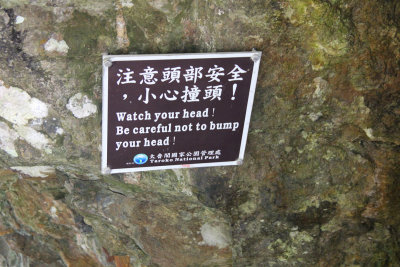
Sign reminding people to watch their heads. |
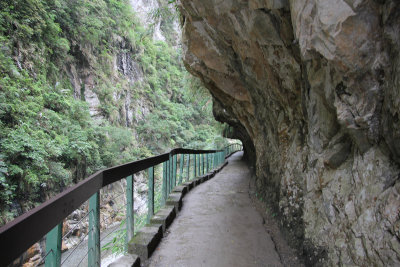
A bucolic section of the trail. |
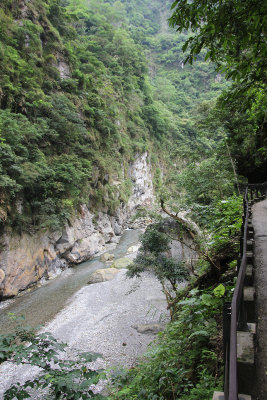
Another Shakadang River view from the Shekadang Trail. |
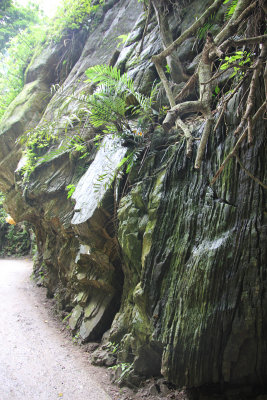
Interesting striations on the rock along the trail. |
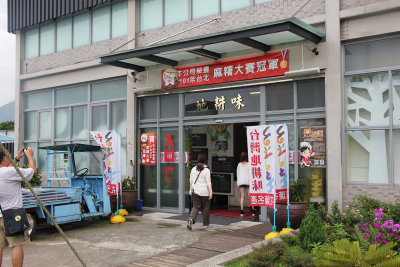
Our next stop was at a local factory where they sold food, beverages and cosmetics. |
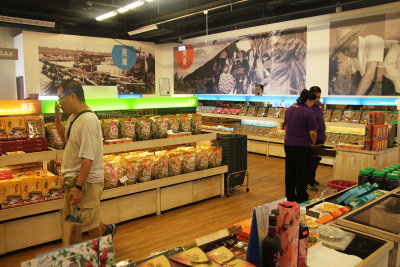
I bought some hand-made collagen soap to bring back as a souvenir for friends. |
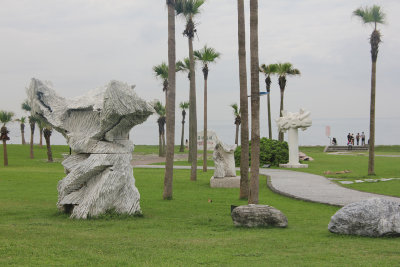
Our next stop was to Stone Sculpture Park, which is located along the Pacific Ocean. |
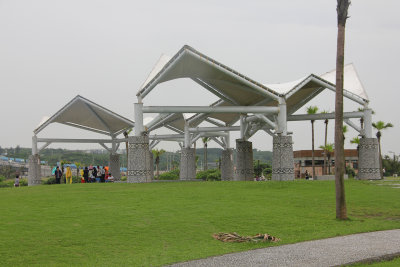
It was raining, so these sheltered us from the rain. |
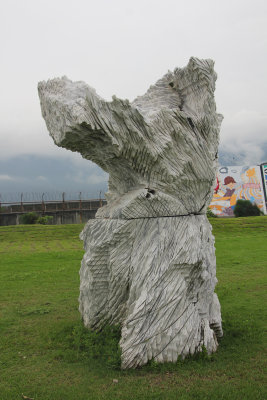
This sculpture is entitled, "Greeting the Wind." |
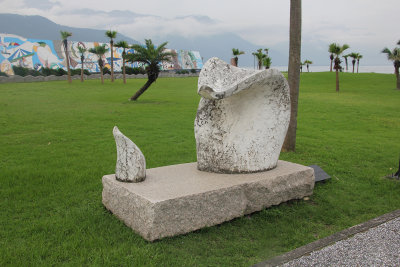
This sculpture is entitled, "Flower and Dog." |
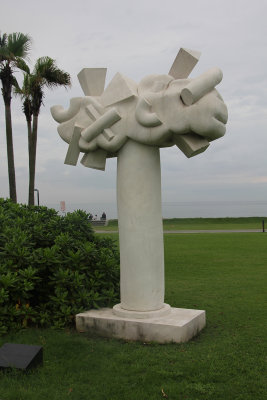
This sculpture is entitled, "Permanence." |
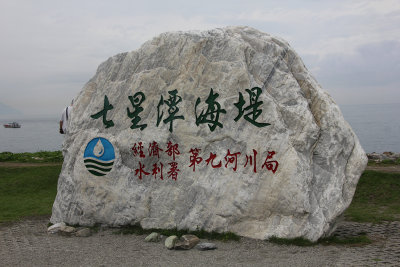
Rock with Chinese writing and a logo in Stone Sculpture Park. |
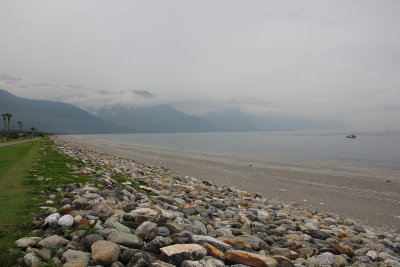
The beach at the park with a view of the mountains of Taroko National Park and the Pacific Ocean. |
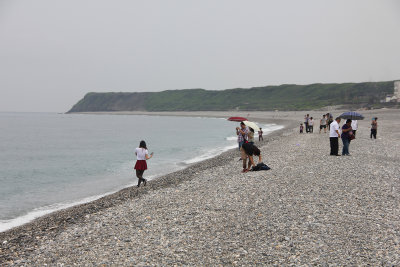
People enjoying the beach even though it was raining. |
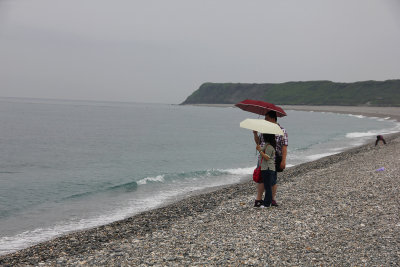
They had their umbrellas up. |
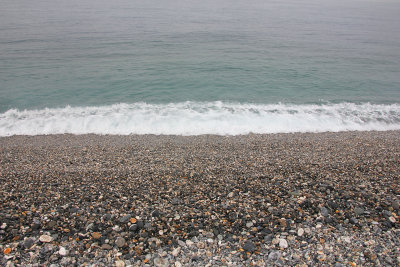
Surf on the rocky beach. |
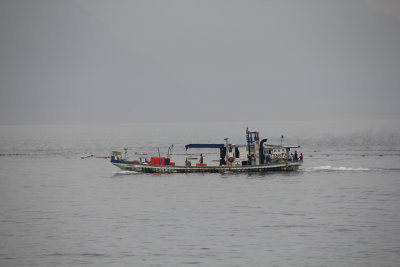
A fishing boat offshore. |
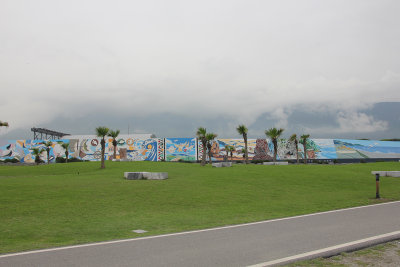
A long mural at Stone Sculpture Park. |
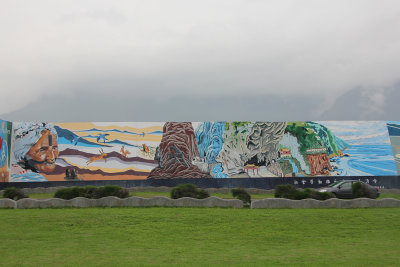
Close-up of a section of the mural. |
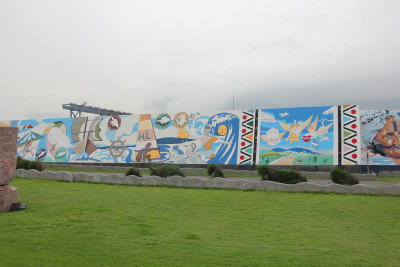
Another section of the mural. |
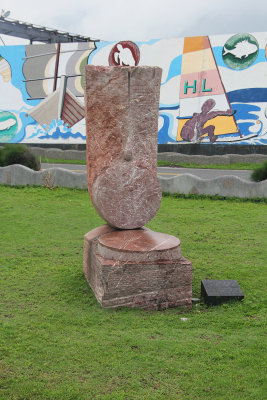
This sculpture in front of the mural is entitled, "Lotus an Imperial of the Sun." |
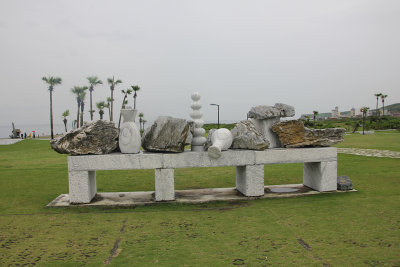
Another unusual sculpture at Stone Sculpture Park entitled, "Gratification" |
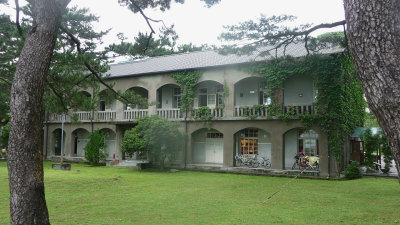
Our last stop of the day was to Pine Garden. |
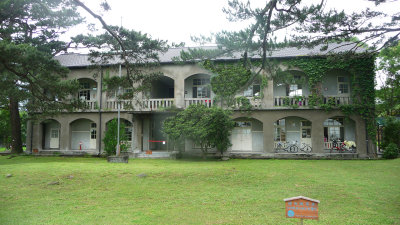
During the Japanese occupation during WWII, they used it as a command center to plan kamikaze attacks against the United States. |
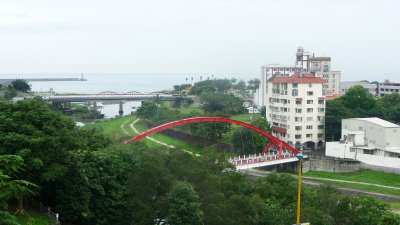
View of Hualien City from Pine Garden. |











